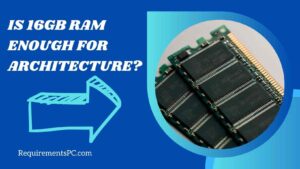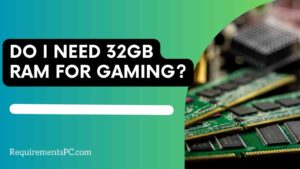Random Access Memory, or RAM, is a crucial component of a computer’s hardware. It provides temporary storage for data that the computer’s processor needs to access quickly. As technology evolves, the performance and capacity of RAM have increased dramatically, prompting questions about its optimal temperature range and the need for cooling. In this article, we delve into whether RAM needs cooling, the ideal temperature range for RAM, and why it doesn’t necessarily require additional cooling. Additionally, we explore the potential performance benefits of cooling RAM and how to ensure that your RAM remains at an appropriate temperature.
What Is The Optimal Temperature Range For RAM?
Maintaining the optimal temperature range for RAM is important for ensuring its effective performance and longevity. Typically, a temperature of approximately 40 Celsius is considered normal for RAM, although this can vary based on factors such as the required volts and any overclocking activity. It is important to note that any overclocking of RAM beyond 1.5v can lead to an increase in temperature, and exceeding this threshold can result in damage to your RAM.

Pushing your RAM beyond its limits and causing the temperature to surpass 50 Celsius can lead to permanent damage. Therefore, it is recommended to exercise caution when overclocking RAM and ensure that the temperature remains within safe limits.
It is important to maintain a watchful eye on the temperature of your RAM to ensure it remains within the recommended range and avoid any potential damage or malfunction.
In summary, the optimal temperature range for RAM is critical to both its performance and longevity. Therefore, it is important to remain careful, particularly during overclocking or in warm environments, to ensure your RAM operates efficiently.
Does RAM Need Cooling?
Generally speaking, Random Access Memory (RAM) does not necessitate active cooling as it generates less heat compared to other components, such as the processor or graphics card. Nonetheless, the need for active cooling may vary depending on the type of RAM utilized and the workload intensity. When overclocking the RAM, it generates a considerable amount of heat, which may require the implementation of cooling solutions to prevent damage or performance degradation.

An additional consideration that may affect RAM cooling requirements is the ambient temperature of the environment where your computer is being used. If your computer is situated in a warm room or an inadequately ventilated area, the internal temperature within the computer case may rise, potentially impacting the performance and lifespan of your RAM.
Why Doesn’t RAM Need Cooling?
As we discuss above, RAM does not necessitate a cooling system unlike other computer components such as the CPU or graphics card. This is primarily because RAM does not generate as much heat as other components, particularly the CPU.
The main purpose of Random Access Memory (RAM) is to provide temporary storage for data, which it accomplishes with minimal energy consumption.

Additionally, RAM chips are engineered to function optimally within a specific temperature range, typically between 40-45 degrees Celsius. This temperature range is well-suited for typical computer system operations, and therefore, additional cooling measures are unnecessary.
Does Cooling RAM Increase Performance?
The effectiveness of cooling your RAM largely depends on whether or not you are overclocking it. When RAM is pushed beyond its capabilities, it generates excessive heat that can compromise its stability and performance. In such cases, cooling the RAM becomes crucial in maintaining its optimum functionality.

Moreover, proper cooling of RAM also helps safeguard it from potential damage caused by overheating. By ensuring the optimal performance of your RAM, you can enhance your system’s overall performance and ensure its longevity.
Furthermore, it is note that the temperature of your computer’s random-access memory (RAM) can also affected by the surrounding conditions. Therefore, if your computer is located in a warm room, your RAM may experience an elevated temperature, which can potentially compromise its functionality. Considering the circumstances, it might be worth considering the option of cooling your RAM. It is essential to keep in mind that cooling your RAM may not always be required, but it can prove to be advantageous in certain scenarios.
How Do I Keep My RAM Cool?
Maintaining optimal performance and extending the lifespan of your computer’s RAM is crucial, and requires careful attention to cooling. Apply effective cooling measures can be achieved through a variety of methods.
Firstly, it is important to ensure that your computer is situated in a large, cool and shaded location. Overheating can seriously compromise the performance of your RAM.
Additionally, proper ventilation is key to keeping your RAM, CPU and GPU cool. This can be achieved through the installation of additional fans or a liquid cooling system. Remember, a well-ventilated computer ensures the efficient operation of all internal components.
Furthermore, ensuring the proper installation of your RAM and providing sufficient space between the modules to promote air circulation is crucial. Upgrading to higher frequency RAM can also be advantageous as it typically consumes less power and produces less heat.
How Do I Check My RAM‘s Temperature?
It is crucial to monitor the temperature of your RAM to ensure top-notch performance and avoid any potential damage. Fortunately, there are several software programs available that can assist with this task. One such program is CPU-Z, which is free and provides comprehensive information about the various hardware components of your computer, including RAM temperature.
Upon installing CPU-Z, locate and open the program, and select the “Memory” tab where you will find detailed information about your RAM, including its temperature. Additionally, HWMonitor is another software alternative that offers real-time temperature readings for different components of your computer, including RAM.





